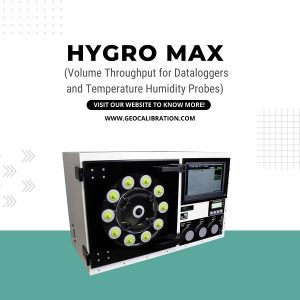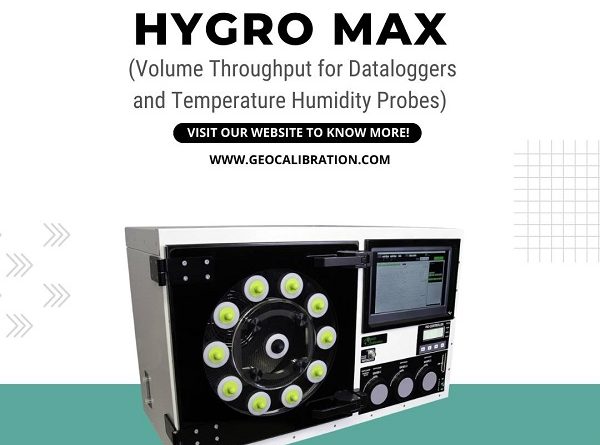The Relevance of Humidity and Temperature Chamber to Meet Needs for Fuel Cell Testing
Temperature, humidity, and pressure are very important parameters during the inspection and analysis of the fuel cell. A slight change in the variables of these parameters seriously compromises the effectiveness of efficiency and precision in the evaluation exercise. Measurement has to be very accurate; for instance, controlling temperature and humidity creates very minute water droplets. Occasionally, the droplets affect the instruments, which in turn provide insufficient data and thus make the risk assessment unreliable.

These environmental conditions should be tightly controlled to output measures of associated accuracy and reliability. Research on polymeric electrolyte membrane fuel cells must be exact in setting the environment. Control environmental conditions like temperature, humidity, and pressure should be adjusted while setting up the laboratory. Accurately measure and immediately manage all variables; otherwise, achieving consistent results will not be possible.
By providing accurate data sets relevant to the field and proper control and management of these conditions, researchers shall further the leading edge in fuel cell technology in development and deployment into the industries. Controlled research environments ensure a greater understanding and improvement of the fuel cell technology toward its effectiveness and high potential impact.
On the other hand, the PID Control System gives its value by using a humidity and temperature chamber to check the parameters of the two conditions. For instance, such a system ensures both conditions are optimized in the test settings by controlling excess moisture through desiccants and regulating temperature changes.
The PID control system assures stable conditions in various applications, from research to industrial processes, based on the tightly controlled conditions in the environment. Its ability to handle high and low humidity and temperature extremes is very well used to provide reliable and accurate results.
Certainly, the ultrasonic system is one of the popularly suggested systems owing to its precision in measuring humidity and temperature; however, it calls for minimal hardware realizations. Technologists, researchers, and practitioners in the fuel cell industry, therefore, can keenly follow up on the performance of the mentioned test setup involving an environment critical in evaluating polymeric electrolyte membrane fuel cells.
The ultrasonic system efficiently offers reliable assessment with continuous data by providing readings with very high accuracy while reducing the component count. Besides, this effectively ensures the right conditions to fuel more research and evaluate cell technologies.
These technologies are of higher quality and accurately measure the amounts of these critical parameters, giving reliable research and development results. They enable an improved understanding of the detailed function of a fuel cell, pointing out other enhancements of the processes. In this manner, they contribute to the development of better and cleaner ways of energy production.
Fine-tuning these technologies would mean that researchers can start paving the way toward more sustainable energy solutions through innovation and eventually support their development into greener and more effective energy systems. Increasing the penetration of the fuel cell into household appliances and heavy machinery gear means increasing the demand for enhanced-performance technologies. The current trend underlines the pressing need for state-of-the-art fuel cell test platforms.
The industry highly values the Hygro-Remote solution for environmental control for its unparalleled work performance. Managing humidity and temperature in a fully controlled manner enables conduction necessary for characteristic tests and, thus, attains a necessity of the tests – accuracy and dependability. As applications for fuel cells expand continuously, the importance of such sophisticated testing units will become ever clearer in terms of the ongoing need for innovation and the comfort of fuel cells that will operate at the highest efficiency level.
A strategy of this nature will create improvement in fuel cell technology to ensure better performance and sustainability for fuel cell products in everyday life. Focusing on these improvements, we could efficiently raise their eco-friendliness factor and achieve more efficiency with more productive fuel cells for many more applications. This progress supports the development of cleaner, more efficient energy solutions for daily life.
Besides accurate control mechanisms, we have integrated a wide temperature and humidity range so that the settings may adopt the best conditions of any testing procedure. With this, the double-layer strategy effectively serves fuel cell technology in the dynamic development of state-of-the-art, very complex, and changing regulatory requirements for this industry.
It will ensure the continuity of innovation and technology upgrades, ensuring that fuel cells always perform better to meet stringent sustainability requirements for better, cleaner energy solutions while adhering to exacting industry standards.
It would be important to have some veteran engineers or professional companies on board to help draft from scratch. Improve your design task on test equipment designed for humidity and temperature, engineered specifically to meet special requirements from some particular research unit. Set up proper humidity and temperature chamber systems for specific goals and environments.
Moreover, the involvement from the outset with experienced engineers or specialized companies in designing chambers can drastically help to make your design effort perfect in humidity and temperature test equipment in connection with the needs of a particular research entity. It would be important to pick relevant humidity and temperature chamber systems that best suit one’s unique objectives and environments for maximum performance.
The right choice and implementation of the chamber systems enhance the accuracy of the measurements, increasing their potential and, thus, upon in-use derivation, yielding better results that would be valid both in scientific and industrial activities. Application advice from professionals regarding the mentioned chambers implements the right move, yielding more derived and inspired data. Addressing advancements in research and industry demands enhances the reliability of your results.
It will bring about greater efficiency and effectiveness in the work of the technologies to provide the necessary humidity and temperature, both very important in maintaining strength and comparability in the test environment in experimental research. Adapting other technological improvements makes reliability and accuracy in the results available at any given point of development, and having meaningful and comparable research outcomes is important.
A strong background of experience serves as a great ground base for developing support strategies for developing humidity and temperature chambers across different sectors. Researchers examine these industries in the context of chamber design, production, distribution, and calibration.
This research will ensure that with the effectiveness of these chambers, they can find their use in many other varied fields. These chambers will help to improve the acquisition of consistent results by both the operational and experimental environments in general through guaranteed controlled temperature and humidity management with the necessary standardization.

